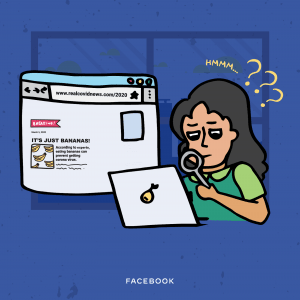A Step-by-Step Guide to Verifying COVID-19 Information online
As the Coronavirus pandemic continues to escalate worldwide, actually, it is more essential than ever for an individual to be mindful of what they share online.
To be honest false and unverified information creates confusion, and in the worst case can sow unnecessary fear and panic.
Every one of us has a responsibility to help reduce the spread of misinformation by ensuring that we only share information that we have verified to be true.
Recently social media company Facebook shares five steps to check information in your feed before hitting the share button on your account:
1.) Inspect the Post
First, You will need to take note of the headline, Fake news stories tend to have sensational headlines and use attention-grabbing tactics such as ALL CAPS and excessive EXCLAMATION POINTS!!!!! Overly dramatic headlines and those with shocking claims that seem too awesome to be true are likely just that — too good to be true

You will need to take note of the website name & URL. Dubious URLs and website names often try to imitate those of authentic news sites with tiny changes like a capital “I” for a lowercase “I” or a zero “0” for an “o”. In case if you are not sure, simply open a brand new browser window and go to the actual site, then compare the real URL with the other one to decide if it’s credible.
2.) Investigate the Website
Suppose if you have decided to follow the link, inspect the article page and check out the author’s name — is he or she a credible news source?
Read Also: Most Coronavirus Patients in Pakistan Are Under 35 Years of Age
What other stories has this author written? It is also good to check the site’s about section to learn more about the site and organization.

Also be on the watch out for inconsistencies with the posting dates and timelines of the story, weird and clumsy formatting, misspellings, and even awkward layouts as fake news sites usually do not pay attention to details like these. be skeptical of Images and videos that look manipulated too.
3.) Take Note of the People Quotes in the Story
Incase if experts are cited and even quoted in an article but left nameless “A top expert says…” it could be an indication of a fake news story. Simply double-check if sources — other articles and studies — that the writer has referred to are accurate.

4.) Compare with other Headlines and Stories\
Here I will recommend you to do a quick sweep if other news sources are reporting on the story and check data points with credible sources. It is more likely for the story to be true if double credible sources are also reporting on it.

5. Get the Latest and Official Information on Coronavirus only from Global and Local Health Authorities
So you will be able to rest assured that you are reading, sharing legitimate and accurate information, refer directly to the following for updates below:
- Facebook Coronavirus (COVID-19) Information Center for Pakistan (www.facebook.com/coronavirus_info)
- Pakistani government website for COVID-19 (http://www.covid.gov.pk/)
- NHSRC Messenger Automated Experience Chat Bot (http://messenger.com/t/NHSRCOfficial)
- WhatsApp Coronavirus Information Hub (http://www.whatsapp.com/coronavirus)
- World Health Organization (WHO) COVID-19 page: https://www.who.int/emergencies/diseases/novel-coronavirus-2019
When the day is ending, you should think critically about you have read online and only share the true news that you know, really, believe, to be credible, We will recommend you to use the above guide as a starting point, must you find a post to be a fake news story on Facebook, don’t hesitate to report it by hitting at the above right of the post, clicking Find support or Report Post, and even reporting it as False news.



